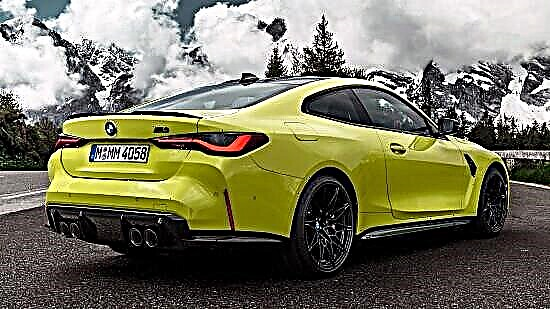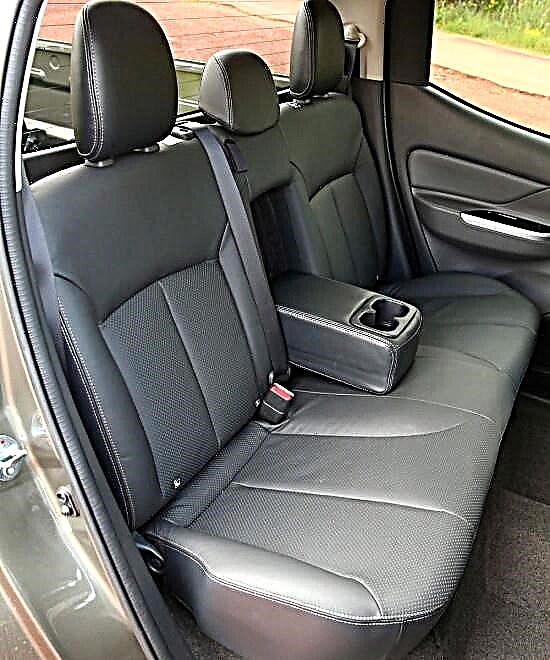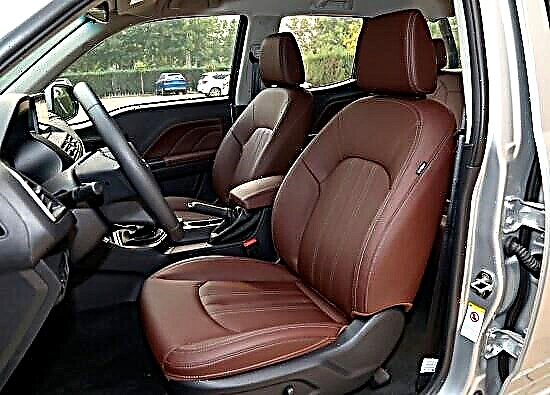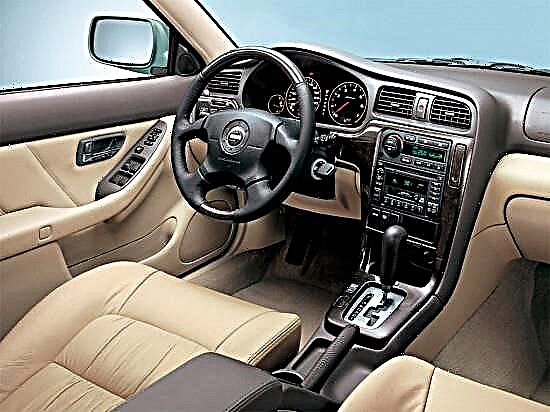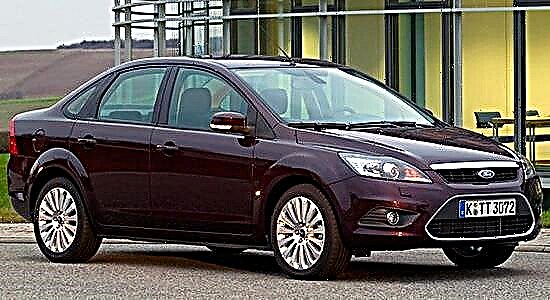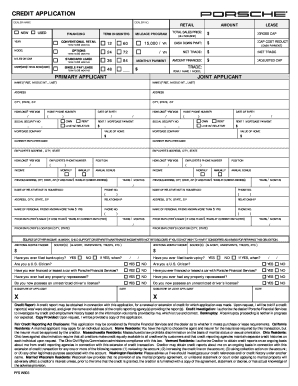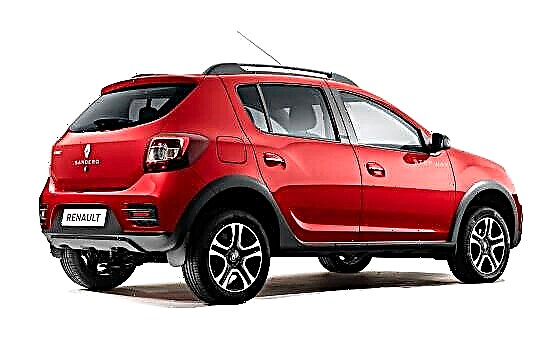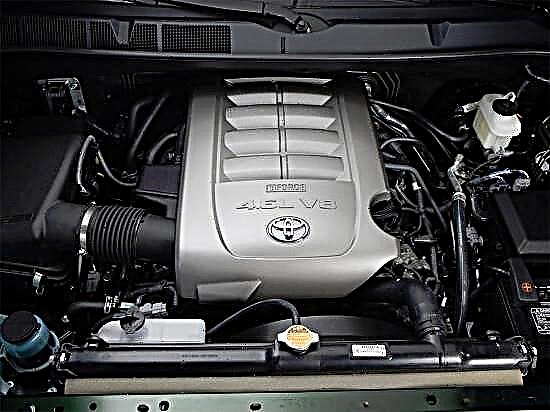The International Chicago Auto Show, which took place in February 2006, became the site of the official premiere of the next, second generation, large Toyota Tundra pickup. Compared to its predecessor, the car has changed beyond recognition - it has become more beautiful outwardly, better inside and more modern in technical terms.

After entering the market, the Japanese-American "truck" was regularly improved, but the most noticeable portion of updates was separated from it in 2013 - the restyled version was presented to the public in February at the Chicago Auto Show. And they did a good job on the pickup - they refreshed the exterior, made the interior more modern, modified the engines and expanded the list of available equipment.

The second generation Toyota Tundra demonstrates an aggressive, rebellious and highly modern design, which is supported by impressive dimensions. The "front" part looks the most advantageous, exposing a huge trapezoidal radiator grille shield, a massive hood, a powerful bumper and fairly compact headlights with LED "garlands" of running lights.
But from other angles, the pickup is perceived as a typical American - massive and rough shapes with embossed sides, large strokes of rounded-square wheel arches, vertical lights and a strong rear bumper.

The "second" Toyota Tundra is available in three versions - Regular Cab with a two-door cab, Double Cab with a four-door cab and Crew Max with an enlarged cab. The first two solutions can also have both standard and extended cargo platforms.
The overall length of the vehicle is 5239-6289 mm, the height is 1920-1941 mm, the distance between the axles is 3220-4180 mm. The width and ground clearance are identical for all versions - 2029 mm and 260 mm, respectively.
Inside, "Tundra" looks not like a utilitarian pickup truck, but like a presentable SUV - a weighty multifunctional steering wheel with a four-spoke design, a laconic and informative instrument panel and a massive front panel crowned in the central part with an 8-inch multimedia screen and a large air conditioning unit. But in basic trim levels, the interior becomes more archaic. The decoration of the "truck" is made of high-quality materials - solid plastics, a large amount of genuine leather, wood and metal-like inserts.

The front riders are guided by wide and soft seats, practically devoid of lateral support, which even by their appearance set them up for a measured ride. It's a sin to complain to the rear passengers (in the four-door versions) - they are separated not only by a comfortable sofa, but also by a huge amount of space on all fronts.
One of the advantages of the second generation Toyota Tundra is a spacious onboard platform, the length of which varies from 1680 to 2470 mm, and the width and depth, respectively, are 1690 mm and 500 mm. The car is capable of taking on board from 725 to 950 kg of cargo, depending on the modification.
Specifications. Three petrol power units have been prepared for Tundra, combined with two transmission options and two drive types:
- The base pickups are equipped with a 4.0-liter V-shaped six-cylinder "aspirated", equipped with distributed injection, which generates 270 horsepower at 5600 rpm and 376 Nm of peak thrust at 4400 rpm.
In partnership with him, an exclusively 5-speed "automatic" works, directing the potential to the wheels of the rear axle. The passport fuel consumption of this option is 13.4-13.8 liters per “hundred” in combined driving conditions. - Intermediate versions of the Toyota Tundra sport a 4.6-liter V8 engine with a distributed power system, producing 310 mares at 6400 rpm and 460 Nm of torque at 3400 rpm.
Rear or all-wheel drive is reserved for it, and a 6-band automatic transmission is responsible for delivering traction to the wheels. This pickup on average "eats" 14.7 liters of fuel in mixed mode. - The most "formidable" option - V-shaped "eight" for 5.7 liters with multipoint gasoline supply, whose maximum potential is 381 horsepower at 5600 rpm and 401 Nm at 3600 rpm.
It is combined with a six-speed "automatic", as well as rear or all-wheel drive, resulting in a cost of 15.7 liters of fuel for every 100 kilometers in the combined cycle.

The all-wheel drive transmission on the second generation Tundra is organized according to the classic Part-time scheme, where the front wheels are connected after turning the washer on the center panel. The car is equipped with a low gear, and in the rear axle it has a limited slip differential with Active Trac, which is electronically controlled.
At the heart of the Toyota Tundra is a powerful spar frame, on which the power unit is placed longitudinally, as well as the cab and body.
The car's suspensions are traditional for the class: an independent architecture with double wishbones, anti-roll bars and springs at the front and a dependent scheme with small leaf springs with a sprung at the rear.
The steering system of the Japanese-American "truck" is represented by a rack and pinion mechanism, in which a hydraulic amplifier is integrated.
All wheels have brakes with four-piston calipers and discs, supplemented by default with ABS with EBD and Brake Assist.
Options and prices. The second generation "Tundra" is not officially supplied to Russia, but the secondary market is "teeming" with all kinds of offers - a pickup truck can be bought at a price of 2.8 to 9 million rubles, depending on the installed engine, configuration and year of manufacture.
In the "base" the car is equipped with four airbags, air conditioning, power windows, head unit, rear view camera, ABS, power steering and other equipment. "Top" configurations, among other things, "flaunt" a two-zone "climate", leather trim, a multimedia complex, front seats with heating and ventilation, "cruise", navigation, xenon headlights and much more.


